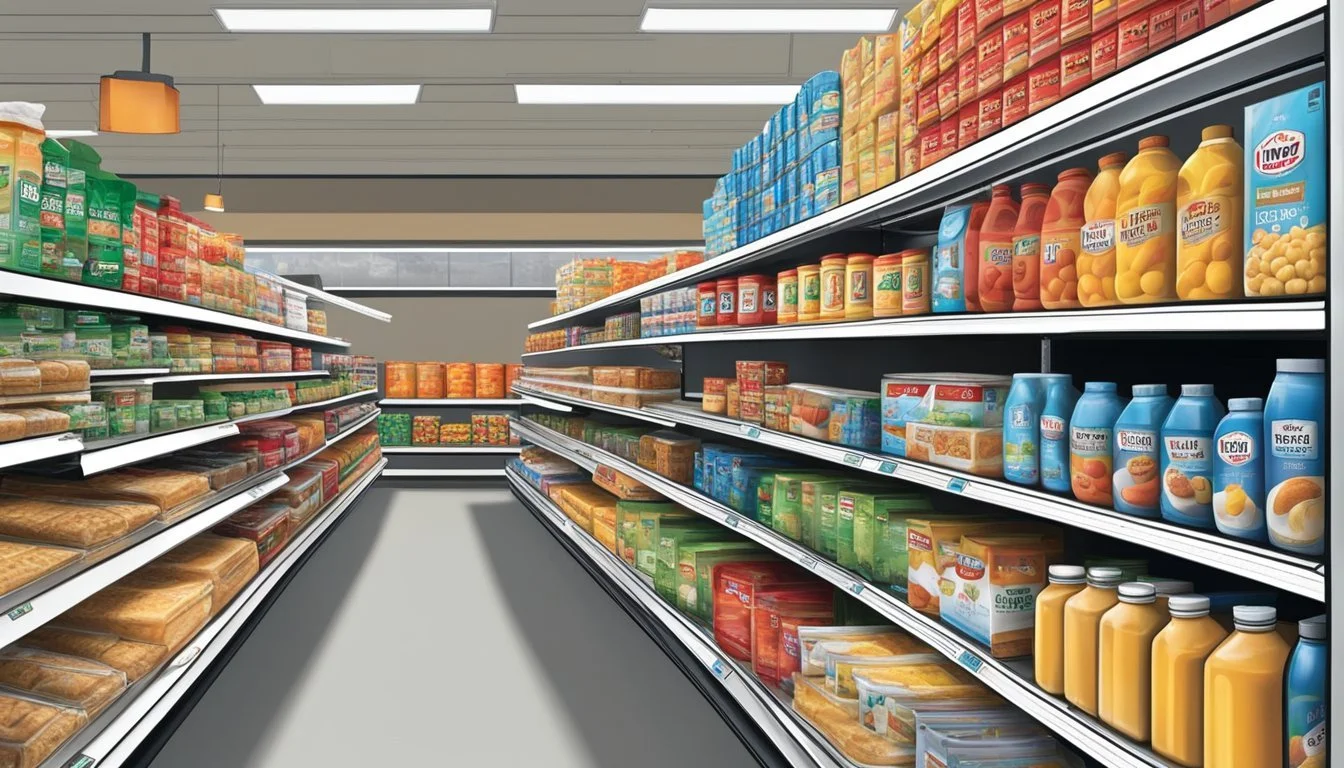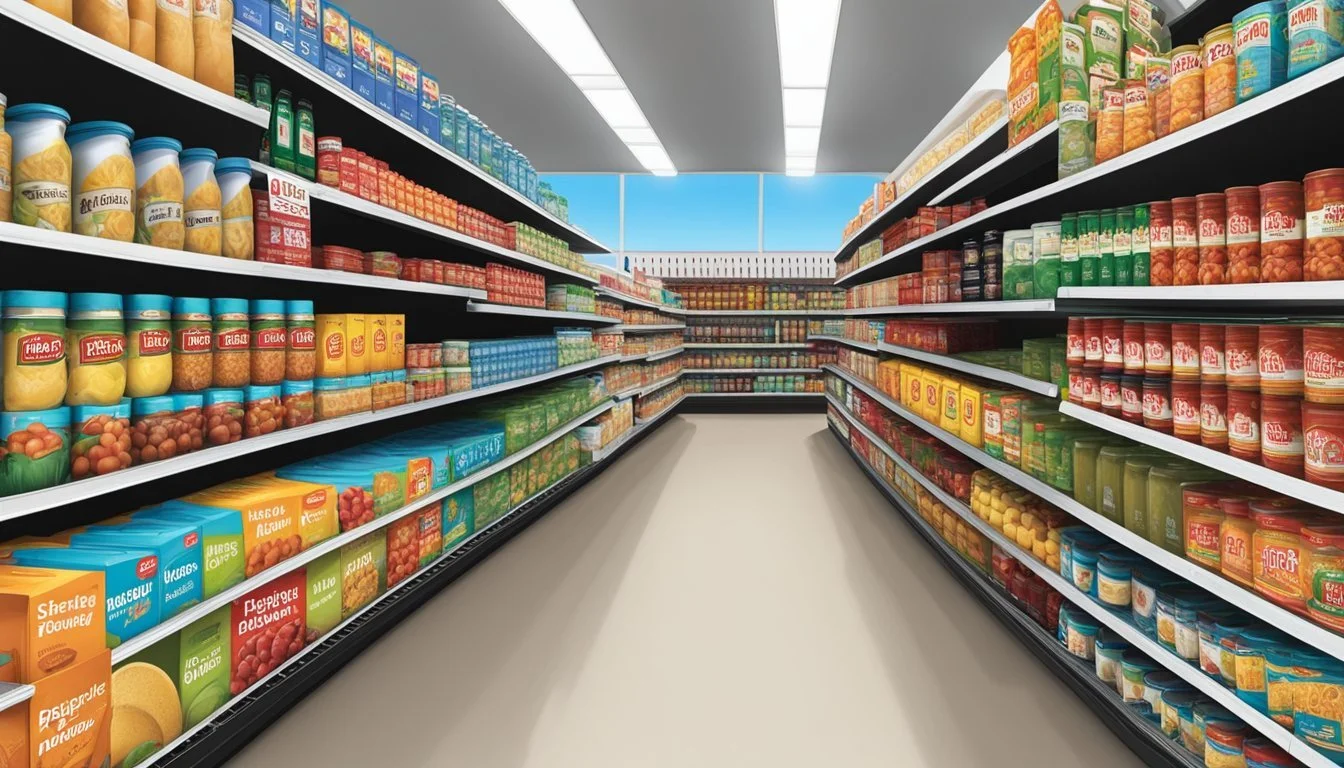Is H-E-B Cheaper Than Hy-Vee?
A Cost Comparison Analysis
Part of Our Grocery Store Guide with Details on H-E-B Prices and Hy-Vee Prices
When it comes to grocery shopping, price is often a significant factor influencing where consumers choose to shop. Two notable players in the American grocery store market, H-E-B and Hy-Vee, are often compared by shoppers seeking the best value for their money. Both chains have established themselves as popular regional supermarkets, but their pricing strategies and the experiences they provide can differ significantly.
H-E-B boasts a strong presence in Texas, where it's recognized for its broad selection of products and competitive prices. The supermarket chain has been known for providing cake customization options and other grocery items at prices many consider to be reasonable. On the other hand, Hy-Vee, with a solid footprint in the Midwest, particularly in the Twin Cities area, has been revered for its quality but has seen varying customer sentiments regarding its pricing compared to other stores.
Seeking an answer to whether H-E-B is cheaper than Hy-Vee requires a detailed price comparison across various departments, including grocery, pharmacy, and bakery. Factors like discounts, in-store promotions, and loyalty programs also play a critical role in determining the overall shopping cost. Past reports and shopper experiences suggest that while both supermarket chains strive to offer value, their pricing may cater to different shopper needs and preferences.
General Overview of H-E-B and Hy-Vee
In the competitive landscape of U.S. grocery chains, H-E-B and Hy-Vee stand out for their market presence and customer dedication. These companies have distinct histories, cater to specific regional preferences, and operate under different business models, distinguishing them in the grocery market.
History and Presence
H-E-B began in 1905 with a single store in Kerrville, Texas. It has since expanded to over 400 stores predominantly in Texas and northeast Mexico, becoming one of the largest independent food retailers in the U.S. Hy-Vee has a similar modest beginning; it started in 1930 in Beaconsfield, Iowa. Now, it operates more than 275 stores across the Midwest, driven by a strong ethic of employee ownership.
Target Markets
H-E-B's target market is deeply rooted in Texas and its culture, contributing to its strong local brand loyalty. Contrarily, Hy-Vee focuses on a broader Midwestern identity, appealing to family-oriented customers in states like Iowa, Illinois, Minnesota, and Nebraska.
Business Models
H-E-B and Hy-Vee have notably different business models. H-E-B is a privately held company, remaining family-owned since its inception, contributing significantly to its regional success and high revenue, which exceeds $30 billion. Hy-Vee differentiates itself with an employee-owned structure that emphasizes individual stakeholding and decision-making at over 93,000 employees' level, fostering a unique corporate culture focused on employee satisfaction and customer service.
Price Comparison Between H-E-B and Hy-Vee
When comparing prices between H-E-B and Hy-Vee, it is important for consumers to consider the pricing of common items, the discount strategies employed by both grocery store chains, and the general perception of prices from a consumer standpoint.
Common Items Pricing
H-E-B and Hy-Vee offer a variety of common grocery items, but their pricing can vary. Based on the information available, one might find that H-E-B often has competitive pricing on staple items such as produce, dairy, and meat, which could contribute to overall lower weekly shopping bills. Consumers can compare specific item prices online or in weekly ads.
Item H-E-B Price Hy-Vee Price Milk, 1 gal $2.49 $2.79 Bread, loaf $1.50 $1.69 Eggs, dozen $1.19 $1.29 Apples, lb $0.99 $1.09
Discount Strategies
Both H-E-B and Hy-Vee utilize various discount strategies to attract customers. H-E-B is known for its digital coupons and weekly promotions, which can significantly reduce the cost of groceries for consumers who use them effectively. Hy-Vee, on the other hand, offers a Fuel Saver + Perks program, which provides savings at the pump and exclusive deals throughout the store. These programs can influence the perception of where the absolute cheapest prices are found.
Consumer Perception of Prices
Consumers often perceive H-E-B as having lower prices, especially for those living in Texas where H-E-B has a strong presence and pricing strategies targeted at the local market. However, Hy-Vee is also seen favorably for its quality and customer service, which some customers may find justifies their pricing. Price perception is influenced by the value customers place on discounts, weekly specials, and loyalty programs offered by each retailer.
Product Quality and Selection
When comparing H-E-B and Hy-Vee, customers find a diverse range of product qualities and selections. These two grocery store chains offer a variety of fresh produce, quality meats and seafood, and a wide range of deli and prepared food options.
Produce
H-E-B is known for its quality fresh vegetables. Customers can find a variety of fruits and vegetables, including ripe strawberries, firm potatoes, and fresh lettuce. The store ensures regular stock of fresh produce to maintain a high level of customer satisfaction.
Hy-Vee also offers an extensive selection of produce. Their focus on freshness means that their vegetables and fruits are often sourced from local suppliers, ensuring that the produce section is well-stocked with fresh items.
Meat and Seafood
The meat selection at H-E-B often includes well-priced and quality options, such as tender chicken breasts. They are known for providing a range of cuts and types of meat that appeal to diverse culinary needs.
Hy-Vee, similarly, takes pride in its meat and seafood department. Customers can expect to find a variety of fresh and frozen seafood options, and the store often promotes sustainably sourced products to cater to environmentally conscious consumers.
Deli and Prepared Foods
H-E-B stands out with its deli and prepared food selections. Consumers frequently turn to H-E-B for ready-to-eat options and made-to-order meals that showcase both quality and convenience.
At Hy-Vee, the emphasis on prepared foods is equally evident. The store offers a myriad of prepared dishes ranging from quick snacks to family-sized meals, prepared with attention to taste and quality.
Store Brand Offerings
When assessing the value of H-E-B and Hy-Vee, their store brand offerings provide a key area for price comparison and quality evaluation. Both grocery chains offer a wide range of products under their store brands that rival national brands on both price and quality.
Comparing Store Brands
H-E-B and Hy-Vee each have their own store brands that often compete closely with national brand products. H-E-B has established a strong reputation for quality with its store brands, which include everything from snacks to seafood sourced from the Gulf of Mexico. They emphasize local sourcing and customer service, which can be a determining factor in their pricing compared to competitors.
Hy-Vee, similarly, provides a variety of store brand products that aim to meet or exceed the quality of national brands. In particular, products like Hy-Vee’s Culinary Tours Smoked Porter Coarse Ground Mustard are cited as being comparable or superior to similar national brand items, such as Halo Top Sea Salt Caramel Light Ice Cream, but often at a lower price point.
Generic vs. National Brands
Generic store brand options typically offer consumers a less expensive alternative to national brands. The quality of these alternatives can vary, but both H-E-B and Hy-Vee have made significant efforts to ensure that their store brands are perceived as competitive, not only in terms of price but also in terms of quality.
Hy-Vee: Touted for its commitment to quality, generic store brand options often offer up to several dollars in savings compared to their national counterparts.
H-E-B: Despite low prices, H-E-B’s insistence on quality control for their generic brands has earned them positive reviews, encouraging customer loyalty through reliable store brands.
By offering products that meet rigorous quality standards, both H-E-B and Hy-Vee can provide value to their customers, with store brands that strike a balance between
Shopping Experience
The shopping experience can largely be influenced by store layout, customer service, and checkout efficiency.
Store Layout and Design
H-E-B is known for its spacious aisles and regionally organized layouts that reflect local tastes and preferences. The design facilitates a straightforward shopping journey from entrance to exit. In contrast, Hy-Vee stores often feature a market-style layout, aiming to create a community feel with sections like the HealthMarket and the in-store dining options.
Customer Service and Support
Customer service at H-E-B is a high priority, with employees, known as Partners, trained to provide assistance and engage with customers actively. Hy-Vee also places a strong emphasis on customer service, with a helpful staff that is willing to support shoppers' needs, whether it's helping to locate items or providing information on specials.
Checkout Efficiency
H-E-B checkout process is noted for its efficiency, with a sufficient number of open registers to minimize wait times. Self-checkout options are also available for a quicker exit. Hy-Vee similarly offers multiple checkout lanes, including self-checkout, and has employees available to facilitate a smooth checkout experience.
Additional Services
When comparing additional services at H-E-B and Hy-Vee, customers will find that both stores offer a variety of conveniences designed to enhance the shopping experience. These include comprehensive pharmacy services, various grocery delivery and pickup options, and a focus on health and wellness sections within their stores.
Pharmacies
H-E-B and Hy-Vee both feature pharmacies that offer competitive prices on medications and include additional healthcare services. SingleCare partnerships with these pharmacies allow customers to save on prescription drugs, ensuring their services are accessible beyond simple medication dispensing.
H-E-B Pharmacies: Over 35,000 nationwide, savings with SingleCare.
Hy-Vee Pharmacies: Integral part of the store's offerings, with a focus on customer health.
Grocery Delivery and Pickup Options
Both companies provide customers with enhanced convenience through their online services, which include grocery delivery and curbside pickup.
H-E-B:
Delivery: Partnerships with third-party services for home delivery.
Pickup: Free curbside pickup, allowing customers to shop online and collect groceries without entering the store.
Hy-Vee:
Delivery: Expanded online services to bring meals and groceries to customer's homes.
Pickup: Online order and collect options for groceries with a focus on customer convenience.
Health and Wellness Sections
The health and wellness sections at H-E-B and Hy-Vee are tailored to meet customer needs through a comprehensive range of products and services.
H-E-B:
Stores house extensive health and wellness departments with a variety of nutritional products.
Hy-Vee:
Focuses on providing a selection aimed at healthy living, often featuring specialty products for wellness.
Assessment of Alternatives
When considering whether H-E-B is cheaper than Hy-Vee, consumers are invited to explore a variety of shopping venues, each with its own niche in the market landscape.
Comparing to Other Grocery Chains
Aldi and Walmart are known for their cost competitiveness. Aldi opts for a no-frills shopping experience and a strong private label lineup, allowing it to offer lower prices. In comparison to Hy-Vee, shoppers might find Aldi's prices more budget-friendly on many staple items. Walmart leverages its extensive distribution network to minimize costs, frequently providing lower prices than Hy-Vee or even Target, across a broad range of products.
Costco operates a membership model and sells in bulk. For customers purchasing large quantities, Costco might offer savings in the long run. Kroger and Publix function as full-service grocery stores like Hy-Vee but may offer competitive pricing on various items depending on regional promotions and loyalty programs. Wegmans and Meijer also serve as full-service competitors, with an emphasis on variety and quality that may affect their pricing structures compared to H-E-B.
Impact of Discount and Dollar Stores
Discount chains, such as Dollar Stores, particularly Dollar General and Family Dollar, can be a cost-effective alternative for certain goods. While their selection may not be as extensive, they often provide lower prices on household items and pantry staples. Dollar stores provide an alternative that might undercut both Hy-Vee and H-E-B on select items, albeit with a limited selection compared to traditional grocery stores.
Online Retailer Comparison
Amazon, with its Amazon Fresh service, represents a significant online alternative. While Amazon offers the convenience of home delivery, its prices can vary. For example, Whole Foods Market, owned by Amazon, is typically perceived as more expensive due to its focus on organic and higher-end products. However, for Amazon Prime members, there might be exclusive deals and discounts that influence the overall cost.
Sam's Club and Costco’s online platforms offer bulk purchasing options which might result in savings over time, especially for large households. In certain areas like California and Mexico, the regional availability of these services, along with local pricing dynamics, can impact the cost comparison between H-E-B and Hy-Vee.
Demographic Considerations
When comparing the pricing between H-E-B and Hy-Vee, it's essential to consider how demographic factors such as family shopping needs and regional preferences can influence overall shopping experience and costs.
Family Shopping Needs
For a family of four, budgeting for groceries is a significant concern. H-E-B offers competitive pricing that can be particularly advantageous for larger families. For example, the store's private label products are developed with price-sensitivity in mind, offering a balance of quality and affordability that can help families in their meal planning without compromising on taste. The importance of catering to family shopping needs is underscored by the fact that families often look for stores that provide bulk purchasing options and discounts on frequently bought items.
Regional Preferences
H-E-B has tailored its offerings to suit regional preferences, specifically within its Texas market. It has a strong presence in cities like San Antonio, where the San Antonio Spurs are a household name, and this may affect product offerings geared towards local tastes. In contrast, Hy-Vee's expansion plans steer clear of the competitive Texas region, suggesting its regional appeal may not align with Texan consumer preferences. As for shoppers in states like Florida, where H-E-B has no stores, regional grocery chains might cater more closely to their local tastes and preferences, which could influence perceptions of cost and value.
Consumer Strategies for Savings
When shopping at grocery stores like H-E-B and Hy-Vee, consumers can employ specific strategies to stretch their dollar further. These tactics involve careful preparation and strategic purchasing to help keep costs low while still acquiring needed items.
Creating a Cost-Effective Grocery List
Consumers should start with a well-planned grocery list, which takes into account current pantry items and avoids unnecessary purchases. To ensure the list promotes savings:
Review Flyers: Check H-E-B and Hy-Vee flyers for sales before compiling the list.
Focus on Essentials: List items that are central to meal preparation for breakfast, lunch, and dinner, prioritizing ingredients that can be used in multiple meals.
Planning Meals Based on Discounts and Offers
Meal planning can have a significant impact on savings, especially when based on available deals. Shoppers should:
Align Meals with Deals: Plan meals around discounted items, ensuring they use weekly specials from H-E-B or Hy-Vee for cheap food options.
Incorporate Flexibility: Keep meal plans adaptable to take advantage of unadvertised discounts found in-store.
Leveraging Seasonal and Bulk Purchases
Strategic buying can lead to considerable savings over time. Here's how:
Seasonal Shopping: Buy produce when it's in season to ensure lower prices and better quality.
Bulk Buying: Purchase non-perishable items or freezable goods in bulk, especially when they are on offer. This can be especially effective for large families or those hosting events.
Conclusion
Comparing prices between H-E-B and Hy-Vee reveals several factors influencing the overall shopping experience. Hy-Vee generally presents lower prices than Cub Foods, and by extrapolation, may offer competitive pricing in the market. However, each store's pricing strategy varies by location and is influenced by local competition, product selection, and promotions.
In a sample comparison, Hy-Vee's total for a selection of 40 items stood at $99.66, which was approximately 10% cheaper than Cub Foods at $110.64. If these trends extend to comparisons with H-E-B, shoppers might find Hy-Vee to be more cost-effective. Still, this is speculative and can be affected by specific deals, product sales, and geographic pricing strategies.
It is also worth noting that H-E-B has a strong market presence and customer loyalty in Texas, which might affect their pricing structure. They maintain large store formats, with a sizeable variety of products, possibly offering shoppers more choices.
Customers are advised to consider additional factors such as quality, location, store brands, and personal shopping preferences when making their decision. They should also take advantage of sales and promotions to optimize their grocery expenditures.
To conclude, while there's evidence suggesting Hy-Vee may offer lower prices on some items, consumers should conduct personal price checks to confirm which retailer provides the best value according to their individual needs and shopping habits.










